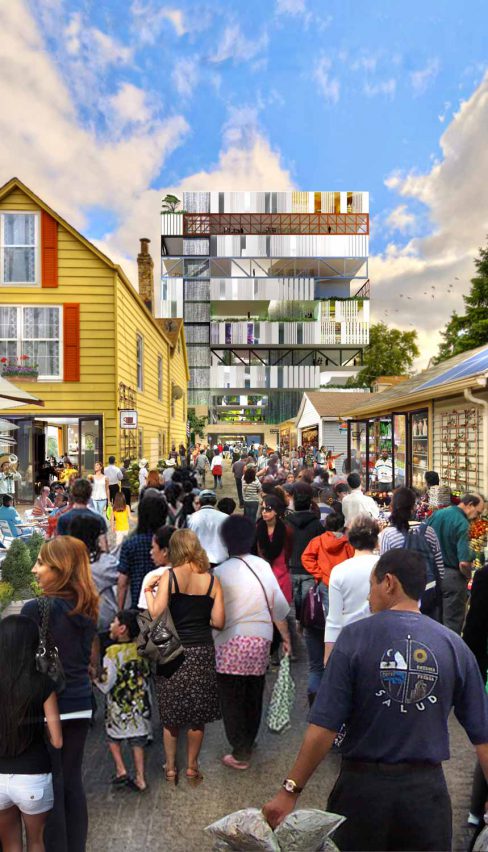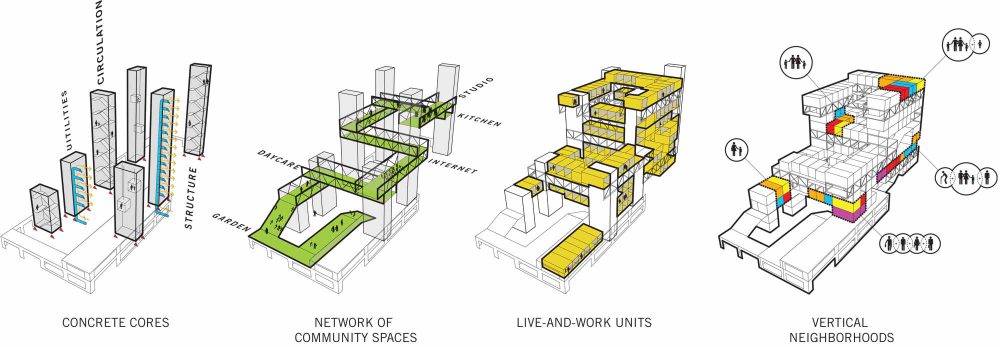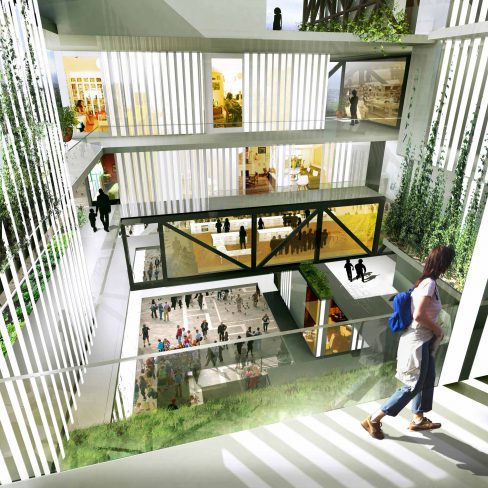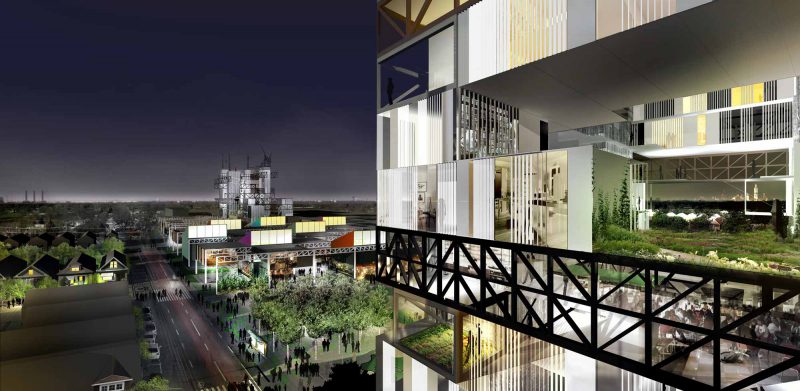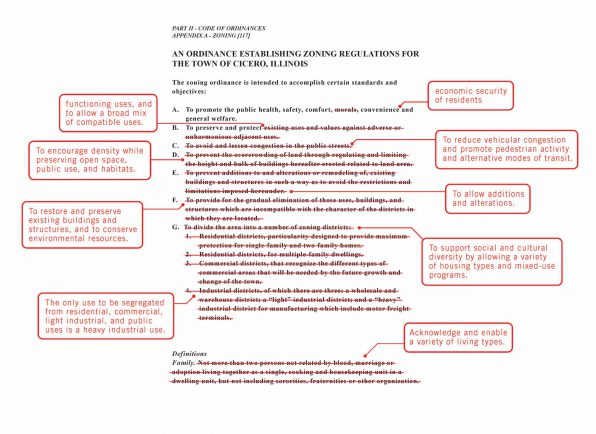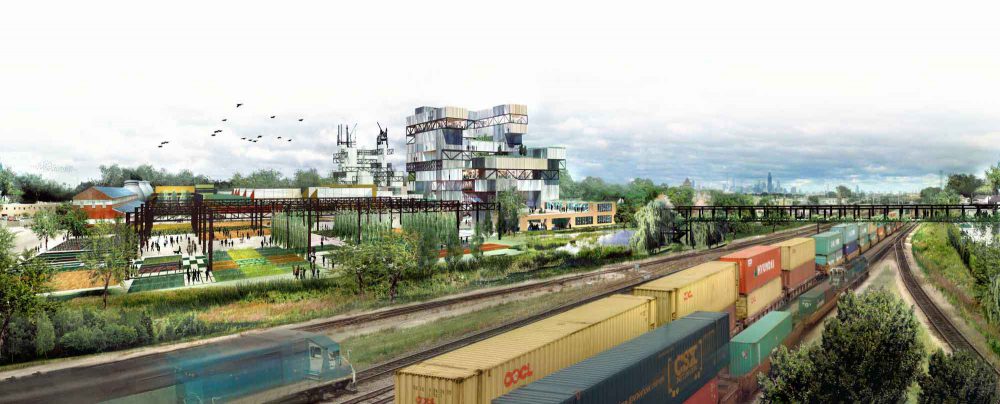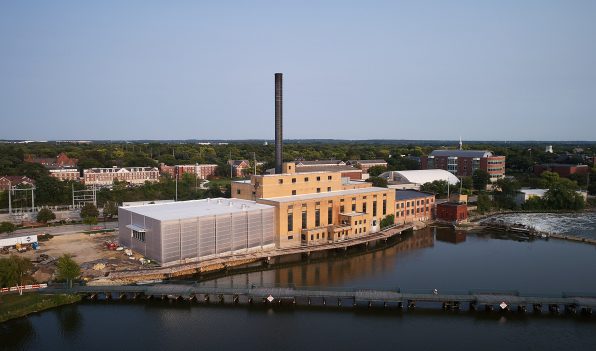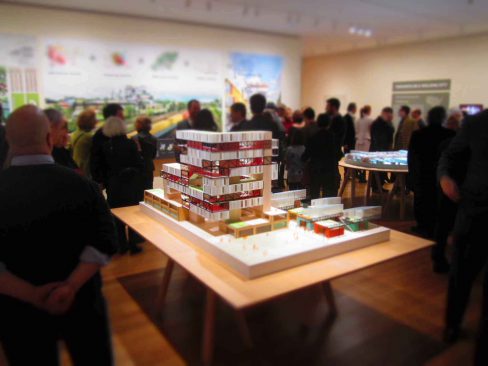Garden in the Machine
Location
Cicero, IL
Status
Designed 2011-12
Type
Residential
Tags
As part of the exhibition Foreclosed: Rehousing the American Dream at the Museum of Modern Art, Studio Gang worked with a team of experts on subjects from finance to environmental remediation to develop Garden in the Machine, a proposal to revitalize the inner-ring suburb of Cicero, Illinois.
Cicero, a former factory town, has struggled with the foreclosure of industrial properties and homes. As a result, its largely immigrant population continues to deal with conditions of unemployment, poverty, and environmental degradation. Garden in the Machine demonstrates how the remains of Cicero’s industry—its lands, building materials, and rail infrastructure—can be reimagined as healthy, thriving neighborhoods that best suit the needs of residents. Combining technology and natural processes to improve the land, Garden in the Machine blends housing and jobs within new, flexible live-and-work structures interwoven with public green spaces. The project also proposes updated zoning regulations and a flexible, alternative form of ownership, empowering residents of Cicero to pursue their own uniquely 21st-century American dreams of health, fulfillment, and prosperity.
Cicero’s rigid zoning code is reimagined in order to unite living and working, public and private, allowing for opportunities such as starting a business at home.
About the Exhibition
In the summer of 2011, the Museum of Modern Art invited five teams of architects, planners, ecologists, engineers, landscape designers, and other specialists in the urban and suburban condition to develop proposals for housing that would open new routes through the mortgage-foreclosure crisis that continues to afflict the United States. Establishing studios at MoMA PS1, the teams set out to imagine new models of housing, thinking not only of its physical form but of the systems of infrastructure and finance that support it. Their focus was not the inner city, but rather the suburbs, which are often passed over in the push of development toward an ever-more-distant periphery. Each team focused on a specific town in one of five regions—the Northeast, the Southeast, the Midwest, the Pacific Northwest, and the Southwest—and developed an inventive proposal that reimagined existing patterns of living, working, and home ownership.
